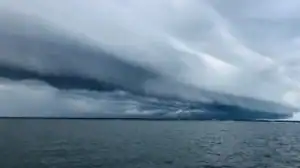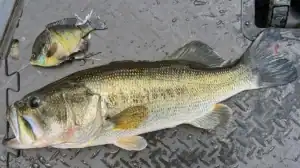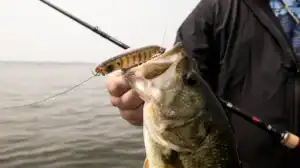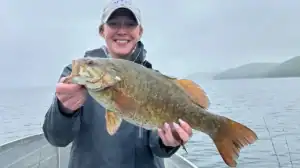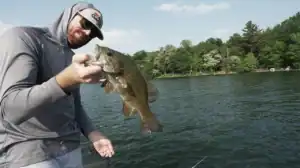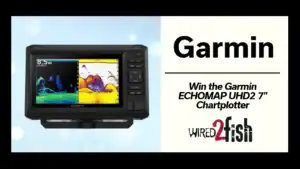The cooling water of fall brings baitfish shallow and spreads bass out down miles of shoreline. A squarebill crankbait is an excellent tool for quickly covering water and triggering reaction strikes as these fish are feeding heavily in advance of winter. Pro bass angler Jimmy Reese discusses how and where to fish squarebill crankbaits during the fall months and why it’s essential to pay attention to not only bottom composition but water clarity and where bank-based shade lines fall.
TACKLE USED (retail links)
- CRANKBAIT – Yo-Zuri 3DB Series Squarebill Crankbait 1.5, color – Black Back Chartreuse
- ROD – Douglas LRS Series Casting Rod, LRS CC724F
- REEL – Daiwa Tatula SV TWS, 8.1:1
- LINE – Yo-Zuri T7 Fluorocarbon, 12-pound
Reese’s 3 tips for fall squarebill cranking success:
- Change lure colors. For Reese, crankbait colors is a crucial detail to get right, with the best-performing color usually influenced by a combination of water clarity and predominant forage. Like many lakes and rivers, California’s Clear Lake has several water clarities, with bass often preferring specific lure colors. Reese has more success with natural colors in clear water and more vibrant colors such as black back chartreuse in dirty water. Additionally, an array of shallow baitfish drives additional experimentation. Reese uses a snap on his squarebill crankbaits so he can quickly change colors without having to retie. Match the hatch seems to be a consistent pattern.
- Use speed as a trigger. Water temperatures may be cooler, but that doesn’t always mean you should fish slow and steady. Reese opts for a high-speed reel to impart speed changes through reel start and stops. Running speed variance and deflections off cover are fundamental bass-triggering mechanisms with squarebills.
- Target bass around shade lines. The number one rule of success with squarebills is making regular contact with hard cover such as docks, rocks, and wood. But Reese is also keen on shade lines generated by the cover. So what? It means he doesn’t always cast to the shade generator, such as a dock, but rather to the shade lines created but the object. Fall shade lines get thrown farther from the cover due to the lower sun angle, so make sure to work your bait through and around the edges of the shade, as bass are often related to the shade, not the structure itself.



